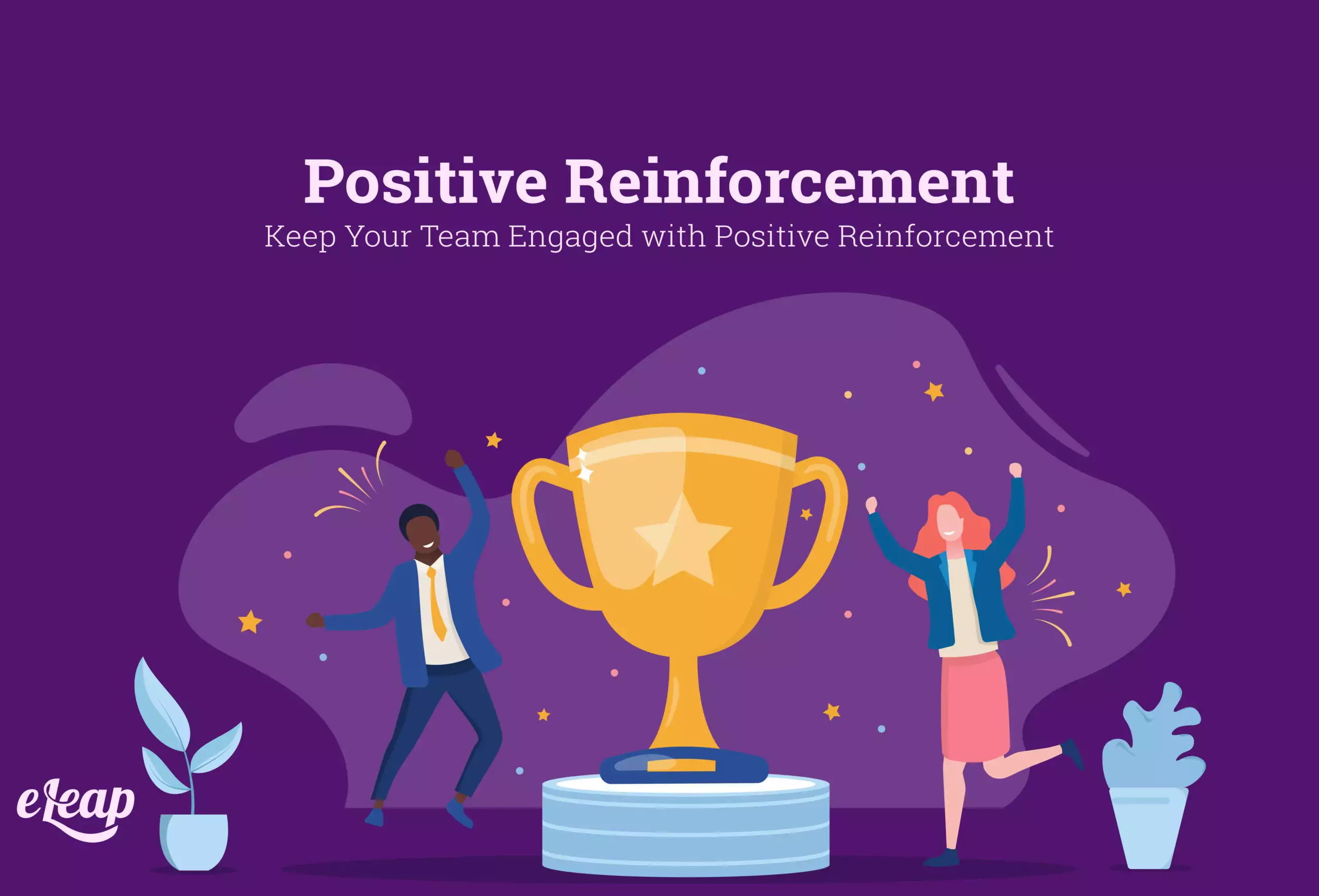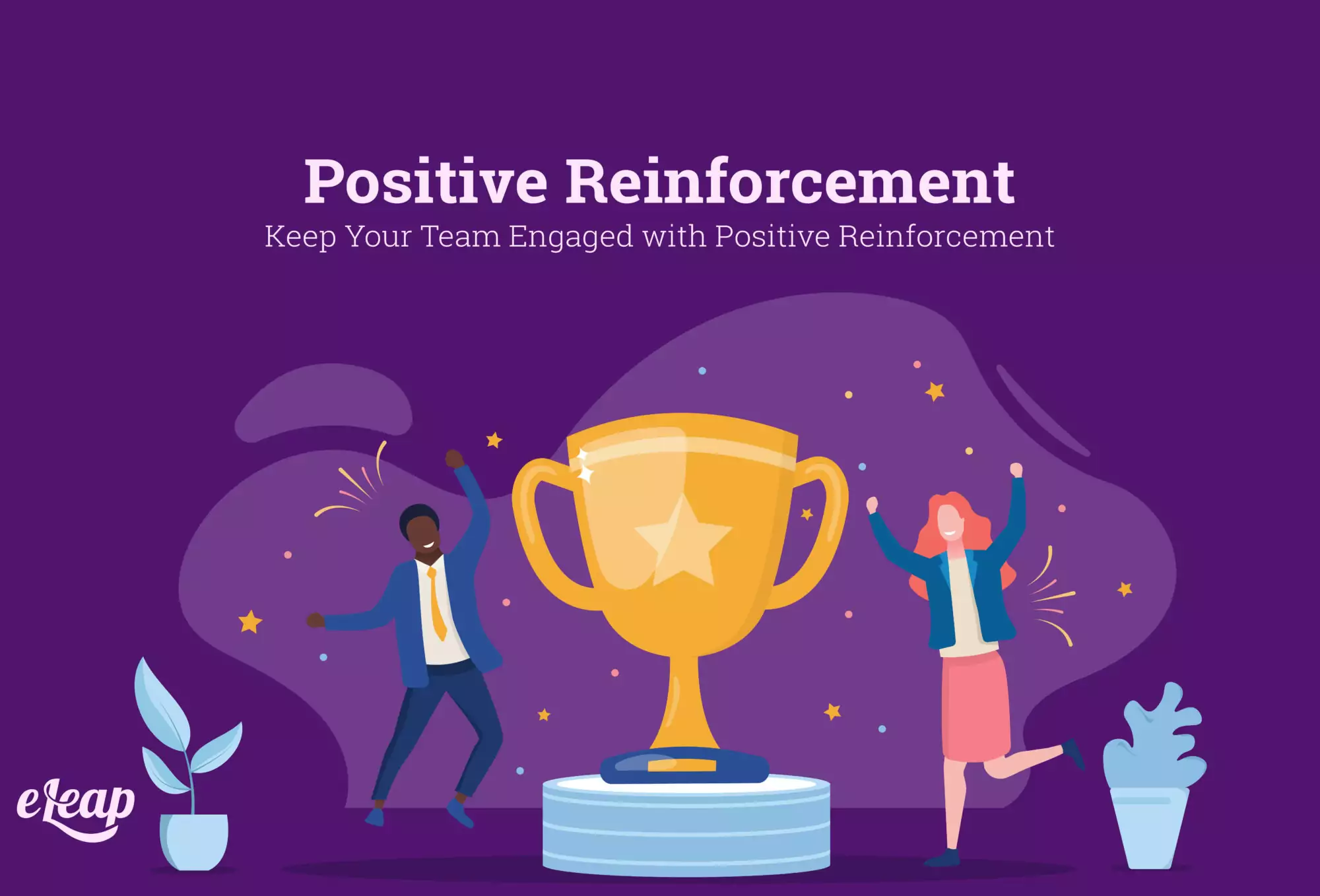Positive Reinforcement
Keep Your Team Engaged with Positive Reinforcement

One of the critical markers of success in business is how engaged and productive your employees are. Without their investment in the organization’s vision, you will have difficulty being as effective as you could be. One of the best ways to get tangible results from your team is to lead with positive reinforcement.

Positive reinforcement is anything you do that increases the desired behavior by adding a reinforcing stimulus after the behavior. That’s a very scientific way of saying that your employees will perform those behaviors more often if you reward the behavior you want to see. A stimulus, or reward, can be anything that influences them to repeat the behavior.
What’s So Great About Positive Reinforcement?
This psychological phenomenon was popularized in the early 20th century by a doctor named B.F. Skinner. Skinner theorized that people’s behavior could be conditioned with rewards (positive reinforcement) and consequences (negative reinforcement).
Many scientific studies show that positive reinforcement has a more significant impact on people than other types of behavior conditioning. In a massive worker survey from 2014, Psychology Today learned that the most motivating thing to employees is a sense of being an appreciated part of the team.
Another article, this time from Positive Psychology, reported that positive reinforcement is the most powerful tool for boosting both productivity and workplace morale.
4 Types of Positive Reinforcement
In psychology, there are four types of positive reinforcers. Each of these types could be used in the workplace.
- Natural Reinforcement: These reinforcers are the immediate effect of some behavior. They happen without any effort from a leader or colleague. A fundamental example is that when you eat, you stop feeling hungry. In the office, a natural reinforcer might be that the stress of needing to finish a task disappears when that task is completed.
- Social Reinforcement: This type of reinforcer happens when those around you express approval or appreciation for your behavior. Telling an employee that they did a great job or giving a coworker a pat on the back are both forms of positive social reinforcement.
- Token Reinforcement: This reinforcement technique involves earning points that can be exchanged for a reward. For example, token reinforcement is giving children stickers on a chore chart, with the promise of their favorite dessert when they fill up the chart.
- Tangible Reinforcement: The final type of positive reinforcement is giving an actual reward, such as a raise, time off, a medal, or some other sort of tangible reward. Tangible reinforcement can be great motivation for short-term goals but may backfire if the team becomes dependent on these rewards to perform at all.
The Downsides of Positive Reinforcement
Are there any downsides to using positive reinforcement in your office? There aren’t many downsides if you use this tool to reinforce the behaviors you want to see. However, it can be easy to accidentally reinforce the behavior you don’t want to encourage. Here’s an example:
Have you ever seen a child misbehave until they get their parent’s attention? The child will intentionally break the rules or cause mayhem until their parent snaps and finally gets down on one knee to look the child in the eye. The parent thinks they are giving their child discipline – but the child only understands the “reward” of their parent’s behavior. Guess what will happen the next time the child wants attention?
Bingo – they will misbehave again. Unfortunately, it is not always easy to notice when and how we might be reinforcing behaviors we don’t want to be performed.
Another issue can be the dependence on positive reinforcement to get any work done at all. You have created another issue if an employee feels unmotivated when they aren’t constantly praised, given a raise, or made “employee of the month.” The employee may get too used to having these rewards, and they no longer motivate productive behavior.
The best way to use positive reinforcement is to intentionally focus on behaviors you want to see and avoid overusing it daily. Be sure to keep rewards, especially tangible rewards, small and allow space to give increasingly better rewards over time to avoid satiation.
How to Make Positive Reinforcement Effective
There are five things you can do to make the positive reinforcement you choose more effective:
- Give the reinforcer immediately after the behavior is performed. The human brain has an easier time associating the behavior and the reward the less time there is between the two. If you want to create a compelling connection between the behavior and something positive, try to offer the reinforcer immediately.
- Make sure the reinforcer has a clear connection to the behavior you want to be repeated. Don’t just give out praise to keep spirits up. Only give specific praise for specific behaviors.
- Make sure the reinforcer is impactful based on the situation. What we mean by that is to look for a reinforcer that is highly rewarding within the given context. If an employee is currently on a diet, a reward of baked goods isn’t likely to feel very rewarding or supportive.
- Keep your reinforcers’ intensity relevant to the situation. If you need employees to complete a life-or-death contract, be sure the reward offered is just as important to them.
- Finally, keep in mind that everyone is different. What will be highly motivating to some employees may not reinforce behaviors for others. Consider doing some strength-based learning to discover what each of your team members is motivated by.
Once you have decided what relevant, timely, and individual reinforcers you will use, you can begin putting this tool into action in your workplace.
Use Positive Reinforcement Thoughtfully to Get Results
Positive reinforcement is an excellent tool to help you promote the behaviors you want to see from your team. The science supports that this is highly effective in the office. Be careful to use this tool correctly and thoughtfully to produce the right results. Not only can this change your team’s productivity, but it can also help your employees grow on a personal level.